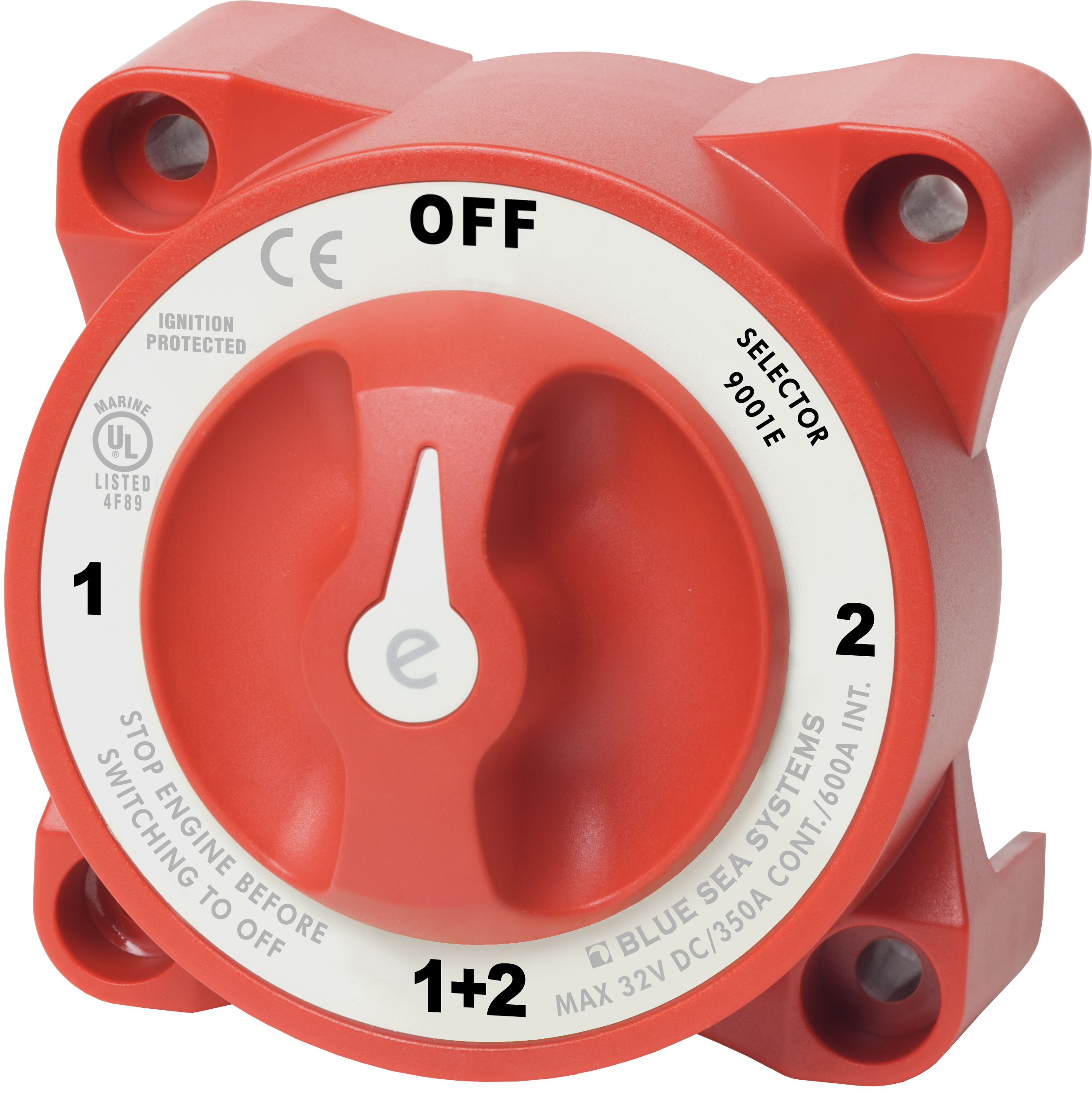Up until very recently, I have been running with Two Battery Banks, A) is 428AH of Rolls Surette S-550 Lead and B) is 1190AH of LFP (3x280AH & 2x175AH. The Lead is my original install and has been Secondary but now I am retiring them (they have become a major PITA now) and I haven't needed them. I am setting up the 280AH's as Bank-1 and the 175AH's as Bank-2 and with the Switch I use (shown below) I can run either independently or as a combined bank. Blue Text = Links to product.
Important Tips:
1) Setup 2 pairs of Main Busbars (+)&(-) for each bank. Switch indicated below using the (+) of course. The 2 Negative busbars are connected together and then to SCC/Inverter/AIO
2) The Battery Wires from Battery Pack (+)&(-) to Busbars should be the Same Gauge & Length.
3) The Wires from Bank Switch & Negative Bus must also be the same Gauge & Length right through
4) Tape/Bind Battery Wires Together To Reduce Inductance !
Do not keep the battery wires far apart. Keep them taped together to reduce their inductance. Reduced inductance of
the battery wires helps to reduce induced voltages. This reduces ripple in the battery wires and improves performance and
efficiency.
5) IMPORTANT - Fuse Each Battery ! 200A to 250A is fine. Especially if you are building so that any single battery pack can act as a StandAlone should any / all of the others cutoff for any reason. To build for Natural Fail Over is the most prudent option.
206AH VS 280AH:
With ONLY 74AH difference you will not have major issues, things only start to get whacky when there is 100AH+ difference. THE Gotcha is SOK' BMS' do not have an application interface via BlueTooth or other, of course makes things more difficult when it comes to tweaking & adjusting. There "will be" some Drunken Sailor Talk to follow inevitably, but not too much. Yes you can charge Both at the same time without issue. The "Lowest Common Denominators" are the 206's which limit your Max Charging Amps to 100A which is perfectly fine. Limited this way because if A 206 is the last one taking charge, it has a max of 103A input and you cannot exceed that.
You CAN charge at Higher Amps because the entire bank itself can take 1C. 2x206+2x280 = 972AH / (972A for 1 hour) although that would never happen. I have charged at 250A without issue as it is proportionally split between all packs BUT once they start to reach "filled" state and start reducing Amps Taken, you can get into serious trouble & fast as BMS' should start tripping on over current ! Yes Over Current as BMS' have limits as to how many amps they allow in for charging, this is a Last Resort cutoff and must be avoided.
NOTES:
- When Charging the Higher the current the more deviation / differential you will see between cells as SOC climbs to 100%.
- When Charging the Voltage OffSet between AIO & Battery Bank will be HIGHER (normal) so the voltage / amperage diff has to be calculated in.
- When Discharging the Voltage Offset between AIO & Bank will be LOWER so again, Low Volt Cutoffs etc must compensate for the difference.
** Every Lug, Fuse, Breaker, Terminal, etc creates Resistance & reduces Voltage "&" Amperage - Fact of Life !
To Manage Both Banks I use a
Blue Sea 9001e Switch. There are also
the HD-3000 Series Versions that can handle 600A+ (1/2" Studs & can handle 4/0).
Something to keep in mind, LFP
Max Voltage Limits are from 2.500 (absolute 0%) to 3.650 (Absolute 100%), this is NOT the "Working Voltage Range" of 3.000-3.400 with Nominal Voltage being at 3.200 Volts per Cell.
Batteries have a NET Capacity (Matched & Batched Cells) to their AH Rating, so a 280AH Cell provides 280AH from 2.950-3.450. When Tested for GROSS Capacity they typically produce 288-292AH from 2.500-3.650.
SOK uses Grade-A (from what's in reviews & teardowns) so they should provide NET 206AH.
Between 2.50-2.950 & 3.425-3.650 only represents about 5-8% of the Gross Capacity and most people reserve that off for longevity & max cycles. Bulk and B Grades etc will provide less AH overall from the working voltage range.
Hope some of this is helpful. Good Luck.



